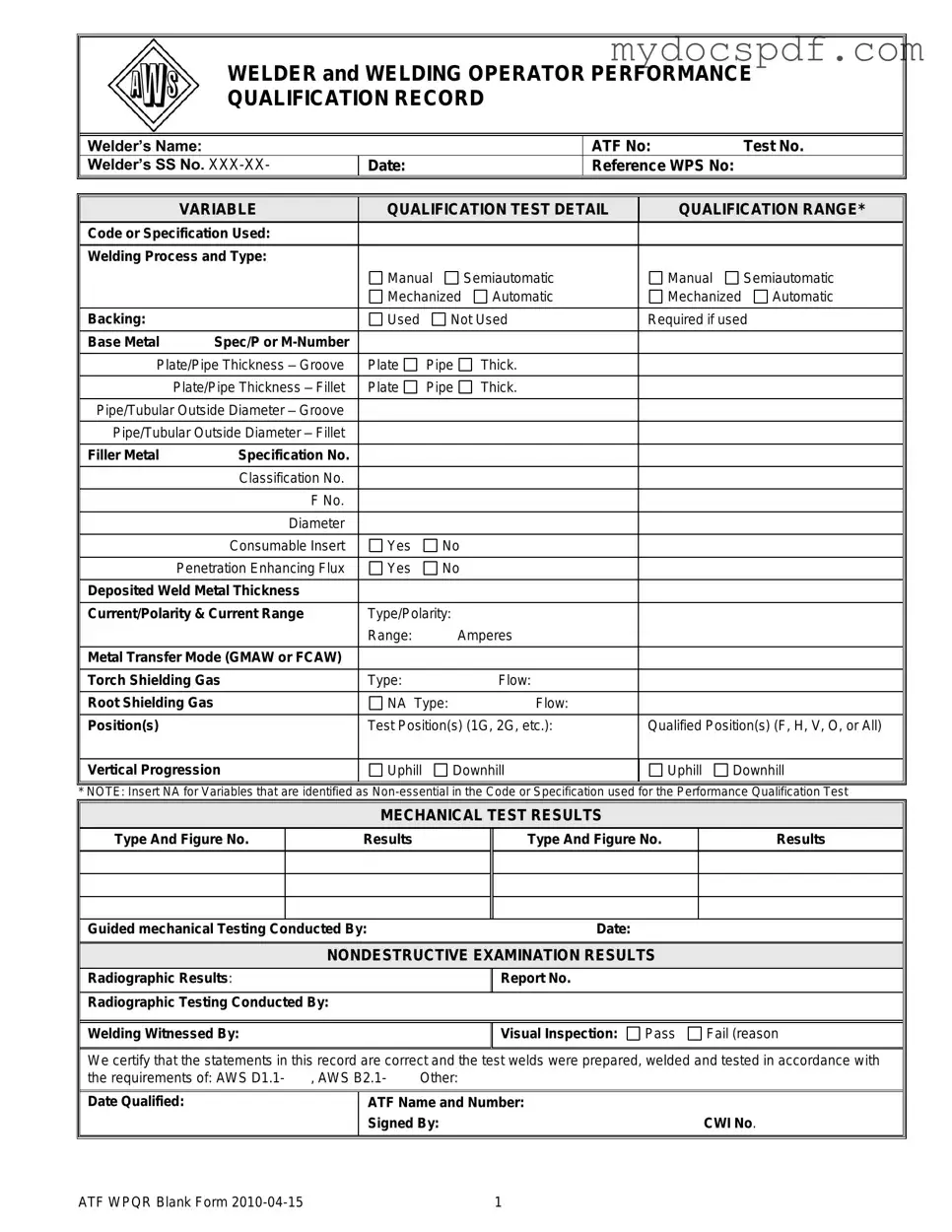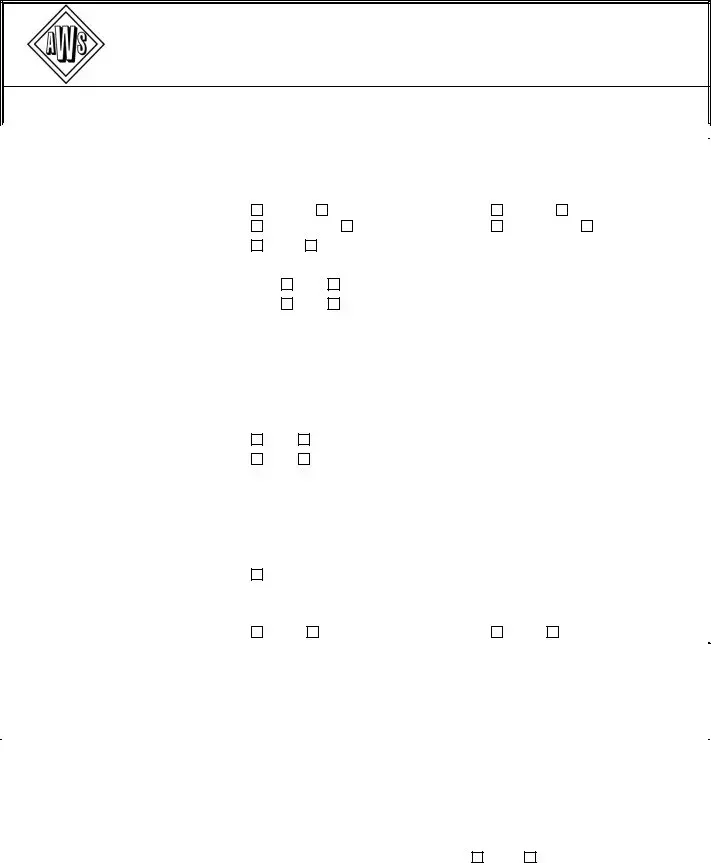The Welder Performance Qualification Record form is an essential document used to verify a welder's skills and capabilities in various welding processes. This form captures key information, including the welder's name, identification numbers, and the specific test details that validate their qualifications. It outlines the welding processes employed, such as manual, semiautomatic, and automatic techniques, along with the types of base metals and filler materials used during testing. The form also specifies the thickness of the materials and the positions in which the welding was performed, providing a comprehensive overview of the welder's expertise. Additionally, it includes results from mechanical tests and non-destructive examinations, ensuring that the welds meet industry standards. By documenting all relevant qualifications and test results, this record serves as a crucial tool for employers and regulatory bodies to assess the competency of welders in various applications. Ultimately, the Welder Performance Qualification Record form plays a vital role in maintaining safety and quality in the welding industry.

